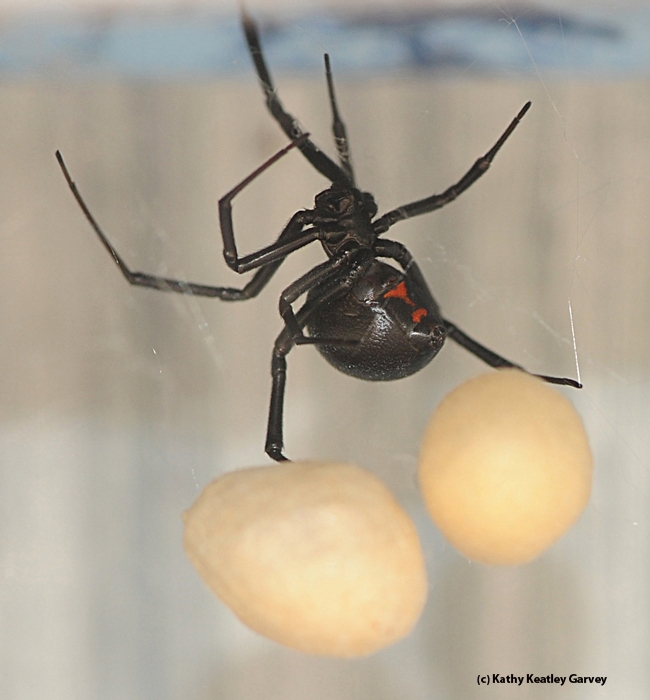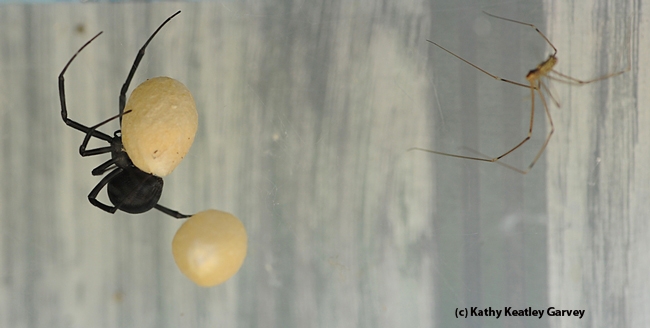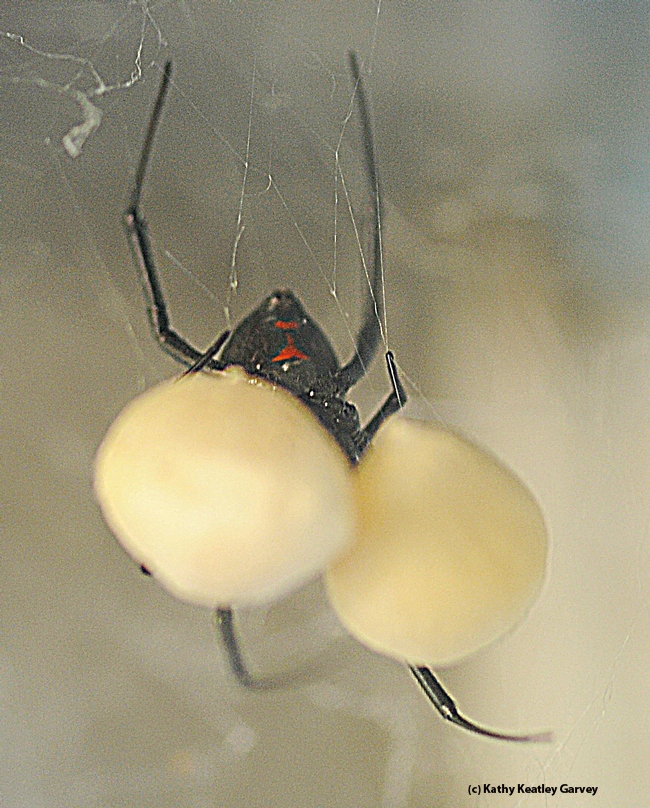The female black widow spider stood guard.
She clutched her two teardrop-shaped egg sacs, suspended from the web she'd earlier woven on the lip of the swimming pool. She spent the day crawling up, over and around them. Two sacs, about 300 eggs inside each one.
Her future offspring. Proud Mama. Dangerous Mama.
Below, honey bees buzzed in the catmint (Nepeta), a white cabbage butterfly fluttered about, ladybugs snatched aphids, and a cellar spider (aka "daddy long-legs," Pholcus phalangioides) waited for the spiderlings to emerge to partake of an all-you-can-eat buffet. Sometimes that can be a four-week wait.
The female black widow spider is a force to be reckoned with--her bite is the most venomous of all spiders in North America. The neurotoxic venom can kill humans, but that rarely occurs. Statistics show the human mortality rate is less than 1 percent.
Not so with the insects and other arachnids she traps in her web. They blunder into the sticky web, get stuck, get bitten, and get eaten. While they're struggling in the web, she punctures them and sucks out their body fluid.
Not a pretty picture. But it is when it's a house fly or cockroach!
The female black widow spider (Latrodectus hesperus) is easy to distinguish. About half an inch long and shiny jet black, she's characterized by a red hourglass pattern on the underside of her bulbous abdomen. But don't bet on the pattern or coloring. Some black widows have a fragmented pattern, and some display no hourglass pattern or no red coloration at all.
You'll often find black widows in the garage, in woodpiles, rock piles, backyard clutter, in corners of sheds or playhouses, and sometimes inside your basement or elsewhere in your home. They spin an irregular, sticky silken web, conveniently located near their future prey.
This arachnid is named "black widow" because of the old wives' tale that she always kills her mate and consumes it after mating. Not true, scientists say. The mating ritual is not always violent.
However, it's when the female black widow is guarding her egg sacs that she's considered the most dangerous. When she bites humans, the bite itself can be painless or quite painful, but should always require medical attention.
That's because the venom is a powerful neurotoxin that causes muscles to contract. "This spider's bite is much feared because its venom is reported to be 15 times stronger than a rattlesnake's," according to a National Geographic post. "In humans, bites produce muscle aches, nausea, and a paralysis of the diaphragm that can make breathing difficult; however, contrary to popular belief, most people who are bitten suffer no serious damage—let alone death. But bites can be fatal—usually to small children, the elderly, or the infirm."
Be careful out there!
Attached Images:

Female black widow spider guarding her egg sacs on the lip of a swimming pool. (Photo by Kathy Keatley Garvey)

Cellar spider (aka "daddy long-legs" Pholcus phalangioides) waits for the spiderlings to emerge. (Photo by Kathy Keatley Garvey)

Bottoms up: Female black widow guarding her egg sacs. (Photo by Kathy Keatley Garvey)